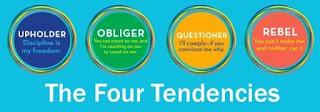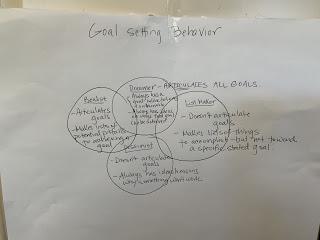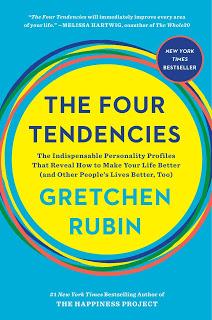


The four tendencies of goal setting behavior as inspired by Gretchen Rubin’s book “The Four Tendencies”
I am on page 66 of Gretchen Rubin’s book “The Four Tendencies” - I stopped reading when something hit me like a ton of bricks. This is similar to the way we handle goal setting at our house. We have goal setting tendencies - my husband is a dreamer and I am a list maker or a realist. Sometimes I am a pessimist. (Although I begrudgingly admit that.)
Why is it that my husband is always thinking of a brilliant goal or project with a list of proactive ways to accomplish that goal. Meanwhile, I am making lists of things to do- often with no particular goal in mind. Or- I can think of a reason why every item on my husband’s list won’t work- this, this and this, is how his project will fail.
It’s a good thing I married a dreamer- he has accomplished more than I could ever dream to accomplish. He sets goals, sometimes unrealistic goals in my opinion, and then he achieves them. But- good thing he has me to keep him firmly planted on the ground instead of floating off into dreamland. Here is an example: my husband wants to be a classical pianist at a professional, paid level. Of all his wonderful characteristics, he has not had a lot of musical training. This is an unrealistic goal. But- explaining that something is unrealistic is not practical for a dreamer. By definition, they set a goal and then do everything in their power to achieve it. In the last two years he has gone from piano beginner to being able to sit and play a nice intermediate piece. It is enjoyable and he loves it- but realistically he will never be hired to play professional gigs. But- never tell that to a dreamer. (If he is hired to play professional gigs someday it will not be the first time he has proven me wrong on something like this.)
I on the other hand have gotten involved in some charity work since the quarantine began in March. This is wonderful for my goal setting tendencies. I am a list maker and a realist. Making no-sew blankets for people in need is, while productive and very needed right now, not a project that achieves a target goal (it is very difficult to quantize the population being served with these blankets). While I sometimes prefer a concrete goal, I often see potential pitfalls in the path to success. I also sometimes prefer doing individual, small projects that don’t necessary accomplish an established goal. To make this project appealing to a dreamer, for example, there would have to be a target goal in mind- and possibly a prize. If somebody in charge said, “the first family to make 50 blankets will get a gift certificate to a restaurant of choice” this project would appeal to a dreamer. The goal is articulated and the pathway is clear. I, on the other hand, am satisfied with the undefined fulfillment of the generic goal of “helping people.”
The difference between my diagram and Gretchen Rubin’s diagram for personalities is that I believe in more crossover. A pessimist can, on occasion, be a dreamer under the right circumstances. A dreamer can, show characteristics of a pessimist. And of course both can be the hybrid cases of list maker or realist.

